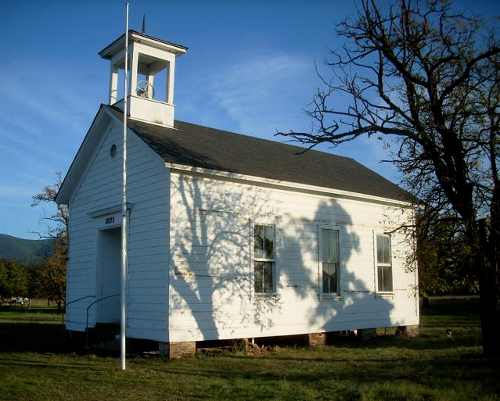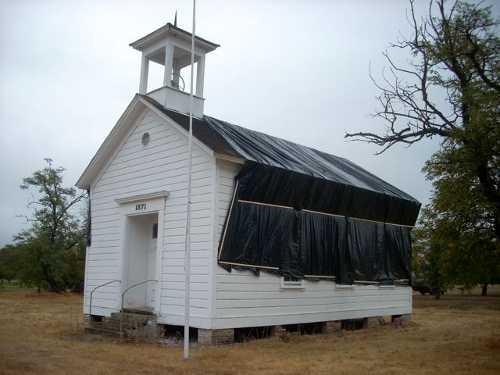LAKEPORT, Calif. – Strains in the relationship between the city of Lakeport and the county of Lake showed through clearly on Wednesday, when a city sphere of influence update before a local commission saw the county challenge legal processes and the city’s own planning documents.
The Lake County Local Area Formation Commission (LAFCO) held a regular meeting on Wednesday, during which it was to consider a regular update on the city’s sphere of influence, which includes property outside of the city boundaries that it eventually intends to annex.
Part of that sphere of influence includes the 197-acre S. Main Street/Soda Bay Road corridor, which has been in the city’s sites as its next annexation area.
While the annexation was not before LAFCO on Wednesday, the growing divide between the two local governments because of the annexation affected and informed what took place before the commission during its morning session.
The situation led Lakeport Redevelopment and Community Development Director Richard Knoll to tell the commission that the relationship between the city and county “has degraded severely,” which he attributed to County Administrative Officer Kelly Cox’s approach in response to the annexation.
In his strongly worked communications with the city, Cox has faulted the city’s steps in the annexation process and the city’s determination to absorb the area.
That issue with annexation has “kind of spilled over” into the sphere of influence matter, Knoll told the commission.
In budget discussions this past summer, Lakeport City Manager Margaret Silveira told the council that the proposed annexation would bring in new revenue for the city.
That commercial corridor is a lucrative one; it reportedly accounts for about 25 percent of the county’s annual sales tax revenue, in the area of $600,000 annually. That’s not a small amount of money for the city, which this year has budget revenues of about $14 million.
For the same reason, the county appears poised to fight to keep it.
Former District 1 Supervisor Ed Robey, who now sits on LAFCO, said during the discussion on Wednesday that he could almost read Cox’s mind on the matter.
“That’s the No. 1 sales tax generating area in the whole unincorporated area of the county,” Robey said.
Cox was out of the office on Wednesday and did not respond to a message left for him seeking comment.
County faults process, documents
While Cox wasn’t present on Wednesday, he sent one of his administrative analysts, Alan Flora, to argue for reducing the city’s sphere of influence to be the same as its actual boundaries and to present a memo from Cox outlining his concerns.
Due to concerns about growing litigation relating to spheres of influence around the state, LAFCO Executive Director John Benoit suggested he might make that “coterminous” recommendation to the commission at a future meeting.
However, Benoit’s report that went to the commission on Wednesday suggested a more favorable outcome for the city, allowing an area larger than the city limits but excluding wetlands, agricultural land under Williamson Act contract and the 800-acre City of Lakeport Municipal Services District property.
The CLMSD land, located along Highway 175, is the site of the city’s wastewater plant and disposal, and also has long been the proposed location of a subdivision and golf course development that in recent years had appeared to have been shelved.
Just what the city’s current plans are for the land were not discussed at the LAFCO meeting.
Supervisor Denise Rushing, who chairs LAFCO, disclosed that she received a note from Cox asking the commission to consider the coterminous option. Benoit said that, ultimately, the decision will be up to the commission, adding that they should give the city some room to grow.
Flora told the commission that the county was concerned about the process and procedure being used, alleging that the city had not met with the county, and pointing out that the county believes that both the annexation application and the city’s general plan – approved in April 2009 – have “substantial problems” that could have been corrected with the county’s inclusion earlier in the process.
Ahead of having the CLMSD land included in the city’s sphere of influence, Flora said the city should have prepared a specific plan for how the property would be used, as required by state zoning law. No such plan was ever completed or submitted, which he said also violates the city’s general plan.
“We request that the LAFCO disapprove the proposed sphere of influence SOI update at this time,” said Flora, adding that the county also wanted LAFCO not to approve a municipal services review, further questioning if LAFCO properly noticed the meeting.
Touching on the annexation, Flora told the commission that the city’s general plan names as a goal a golf course and subdivision on the CLMSD land, with the city having an agreement with developer Matt Boeger – also one of the developers behind the Cristallago subdivision and tourism development proposed to be built outside of Lakeport.
He said that agreement qualifies as a proposal under California Environmental Quality Act rules, and an environmental impact report should therefore be completed on the annexation.
That subdivision project would have a dramatic impact on Lampson Field, the county’s only remaining airport, because it would be within the primary traffic pattern, with the majority of departures directed over that area. Flora said air traffic can’t be redirected, and with the development incompatible with the airport development plan, it could force Lampson’s closure.
City defends plans
Looking on during the meeting was the city’s executive staff, including Silveira, Knoll, Police Chief Brad Rasmussen, City Clerk Janel Chapman, Finance Director Dan Buffalo, Human Resources/Administrative Services Director Kelly Buendia and Utilities and CLMSD Director Mark Brannigan.
Knoll spoke on behalf of the city, asking the commission not to make a decision on Wednesday in order to give city staff the opportunity to read the information packet Flora submitted that morning.
He confirmed that the city did include the sphere of influence/urban growth boundary in its 2009 general plan. The CLMSD property is used for treatment, storage and wastewater disposal.
Robey asked where Lakeport’s sewage would go if the land is used for the residential, commercial and recreational development.
“Well, that’s never been determined,” said Knoll.
He confirmed that the city entered into a development agreement with Boeger, but no specific plan or planning documents have been submitted regarding the project. “It's just never gone through the typical planning process.”
All of that led to an important point, Knoll said, which was that the county’s assertions were wrong.
He said the city was frustrated because of the county’s “last minute, late missiles.”
Knoll added, “It all seems very self-serving to the city and not really legitimate.”
He said the county was arguing on the belief that the city had submitted an application to LAFCO to update its sphere of influence, which it hadn’t. Rather, LAFCO had initiated the process.
Because the city didn’t submit an application, Knoll said it was his interpretation that the city isn’t required to meet with the county.
The city has a right to prepare its own urban growth boundary and sphere of influence, said Knoll, who added that he was not aware of the county making any comments about those issues when the city general plan was approved in 2009.
“It just begs the question, why now?” Knoll asked.
Knoll said the proposed sphere of influence goes back to 1983. The city general plan includes policies encouraging infill development; Knoll said Lakeport is a small, compact city, and he argued that Lakeport is the best example in the entire county of smart growth and urban infill. In his 25 years with the city, Knoll said there have been eight annexations, most of them small.
“We are not land hungry,” he said. “We're trying to do this in a logical way.”
Knoll explained that Lakeport has never seen tremendous growths in housing. During the meeting it had been stated that Lakeport had issued 12 building permits for housing during a year’s time, which Knoll said seemed like a lot to him. Over the years he has seen as few as two to three per year, to a high of about 40.
Lakeport’s general plan contains policies that speak to the city and county working out agreements in the public’s interest, not those of the two local governments.
“That’s really what we ought to be doing,” he said.
The commission voted unanimously to continue the sphere of influence discussion until March 2012, and to work to facilitate a discussion between the city and county before then.
E-mail Elizabeth Larson at This email address is being protected from spambots. You need JavaScript enabled to view it. .
LAFCO Memo November 16, 2011





 How to resolve AdBlock issue?
How to resolve AdBlock issue? 



